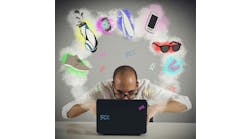As customers' expectations have changed, chief supply chain officers (CSCOs) must take three actions to improve supply chain customer experience (CX), according to Gartner, Inc.
"Supply chain customers today are looking for improvements in areas such as on-time, in-full (OTIF). They also expect shorter lead time and personalized products and packaging,” said Beth Coppinger, senior director analyst with the Gartner Supply Chain practice, in a statement. “Organizations must adapt quickly, as failing to understand and meet customer needs can result in the loss of exactly those customers.”
According to a Gartner survey of 983 supply chain leaders in the second half of 2021, 62% are investing in capabilities to capture, analyze and leverage supply chain-specific customer satisfaction data to support the reinvention of the supply chain to drive commercial innovation.
The report notes that the supply chain of the future will be completely tuned into their customers by leveraging masses of data – from customer product use data to customer satisfaction data and data from a broad range of listening posts.
This development is driving an increased expectation towards the supply chain organization to assume a more customer-facing position and grow the overall business by focusing on commercial growth rather than cost-cutting innovations. However, while many supply chain organizations want to be more customer-centric, they lack clarity on how to transform their organizations.
To drive customer centricity in the supply chain and enhance the customers' experience, CSCOs must begin by taking three actions (see Figure 1).
Build Customer Understanding
To understand their customers, organizations must listen to them at multiple interaction points and examine customer product use data and/or customer satisfaction data. The goal is to get a full picture of what the customer wants, needs and thinks – and to create a shared understanding of the customer at critical touchpoints across the enterprise.
Currently, more than 60% of supply chain leaders are investing in developing and maintaining access to the voice of the customer (VoC) data. If those investments continue, the supply chain of the future will be fully tuned into their customers.
“CSCOs can use VoC data to identify problematic touchpoints – or the key drivers of customer satisfaction and dissatisfaction. It is crucial that data isn’t just collected, but also analyzed and acted upon,” Coppinger said.
Set and Adapt a Strategy for Improving CX
Supply chain leaders will only be able to set a strategic direction for CX when they partner with their executive peers across the organization and align on where the organization will focus its efforts. Clearly defined metrics and expected outcomes are the basis of a successful program as they help to determine whether the selected strategies and investments deliver the desired results.
“Strategy is about making choices and creating focus. If CSCOs have decided on a focus area, a path forward and the required resources, they’re almost ready,” Coppinger added.
Coordinate to Create a Customer-Centric Culture
Successful CX depends on the commitments and actions of all people in the organization. CSCOs must align and communicate the CX vision to get everyone on board and clearly outline the behaviors that need to change.
CX governance is a foundational capability to create organizational alignment and prioritization and ensure that changes are being made. Ideally, there is a CX leader in place, who coordinates best practices and assets, such as the type of VoC solution that is best for understanding a given customer touchpoint. This leader works with a cross-functional steering team to engage the entire organization in listening, understanding and responding - creating products, solutions and services to respond to customer needs.
“To embed customer-centricity in the supply chain, it is important to make the customer come alive in everyday business practices. For example, at the start or end of each team meeting, one person gives a firsthand account of an exceptional experience that was delivered to a customer, and the team then explores if this is something that could be beneficial to the whole organization,” Coppinger concluded.




